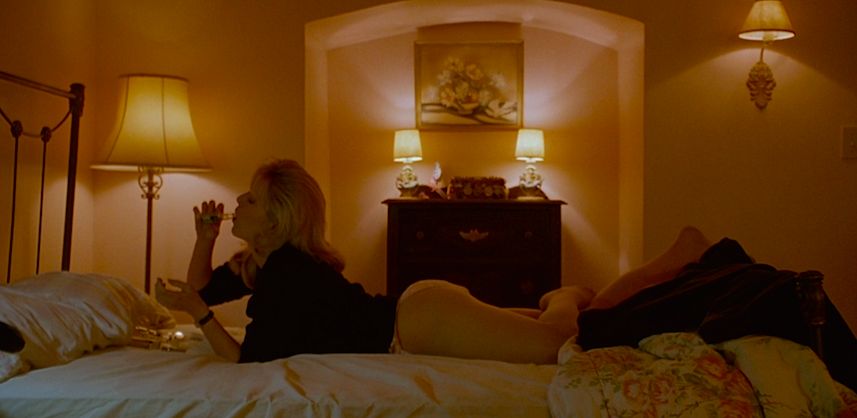After reviewing the footage more objectively in post production, it was still clear the only usable footage was from the first setup. However, this became impeded by my initial intention for the camera coverage that was to be considerably cut up in post, interspersed between the four setups. As a result, I was quite limited in the editing options and ultimately chose to discard all narrative/stylistic motivations and treat the project as a technical exercise in light (and the effects of the colour grade on light) – I know, I know, ironically you’re thinking this is essentially the brief for Assignment 4!
In regards to the final grade I am really happy. On the shoot I felt the cooler temperature worked but after seeing it on the big screen, the skin tone just didn’t feel right and I much prefer the balanced, slightly warmer result. The colour grade also better draws your eye to the light modelled on Sarah, most likely because it provides depth/contrast in comparison to the raw, flat S-Log footage.
The second insight that transpired in post was the results of the 1/50th shutter with 50fps footage. Any time there was movement from the subject at a normal to fast pace, the shutter setting looked more like a cheap ‘n’ nasty, slow-mo trick in post, rather than in camera. Although the shots that saw Sarah either static or slow moving produced an interesting effect, which I was pleased with in the final edit. I would really like to explore and research the effects shutter speed has on video/film, as I’ve never considered breaking the ‘rule’ of shutter=doubled frame rate.
Finally, the decision to work with the Sony A7s (a friend’s) was meant to ‘put to the test’ my technical knowledge while offer a higher quality image for colour grading. However, I had not used the A7s for sometime, which could have been relieved with a pre-shoot test/tinker but due its availability this was not an option. Even though I was amazed by the flexibility of the image in post, particularly the HDR from shooting S-Log, I really didn’t enjoy the ergonomics of the A7s. Since it is mirrorless, the body is very thin and rectangular and is so compact I felt it was uncomfortable to hold. More importantly it was really prone to lens flares and ghosting! After doing some online research this seems to be a recurring problem for the A7s, particularly in high contrast conditions like what I was shooting in. I suppose this issue could have been combated had there been time to become more familiar with the equipment.
While the final project is rather underwhelming for an end of semester piece, at least I’ve got something. I particularly like the effect of the long close up of Sarah, as the duration really asks you to study the image and becomes reflexive (at least it does for me). While this was a hard shoot to reflect on objectively, I can see that there were one too many circumstances that attributed to a snowball: my headspace, unfamiliarity with the camera, too loose of a plan (in conjunction with these other circumstances), my stubbornness to shoot in a room that couldn’t be accessed from outside, over estimation of 4 setups and the pressure (my own) to produce a quality, graduate piece. Had even one or two of these conditions been eliminated maybe it would have been more manageable. No doubt I will apply this experience to future projects and be able to better recognise these kind of circumstances.
Since I graduate this semester this is my last blog post at RMIT – and what a bittersweet post to finish on! But I’ve learnt so much in Film Light both in class, during the exercises and upon self reflection and really look forward to taking this knowledge with me into the next chapter. Thank you to Robin for being a wonderful mentor! Until next time.










 Floating Weeds
Floating Weeds












